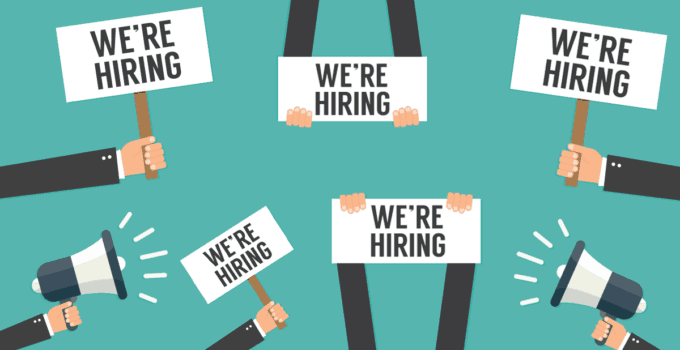CareerBuilder found that 40 percent of employees who don’t feel meaningfully recognized will not go above their formal responsibilities. And 50 percent believe increased recognition would reduce voluntary turnover. With these figures in mind, think about your organization’s current employee appreciation methods. Are you confident that they are sufficient to give your employees the recognition and satisfaction they deserve? If you’re unsure, take a look at these employee appreciation ideas for some inspiration to liven up your organization’s engagement. Social butterfly – Acknowledge an employee’s successes on the company Twitter, Facebook, and Linkedin pages. Not only will this increase recognition,
Where does your organization rank employee recognition in terms of importance when it comes to overall company functionality? Unfortunately, most rank it much lower on the list than it should be. Employee recognition is the backbone of employee engagement—no one wants to do impressive work, or continue doing it, if they feel like it goes unnoticed or unappreciated. It’s important to know everything you can about employee recognition in order for it to effectively help your organization. Here are several facts about employee recognition that everyone should know. 87 percent of recognition programs focus on tenure. The number
When it comes to leadership, which do you think is better: authority or influence? According to Fast Company, “a leader who applies influence rather than asserts authority is likelier to succeed.” Why is this? For one, associating with your employees instead of asserting authority over them makes for more communication and gives the employees a feeling of importance and stronger ties with the project of which they are assigned. The second positive effect of influential leadership is that it helps women overcome the double standard that being in charge and giving orders is seen as bossy and demanding, yet considered
Management training is essential to the entire workforce and its successful development. If you haven’t made the effort to go the extra mile for your management training process, here are several reasons why you should. The employee-manager relationship is the most important factor of employee engagement—that bond can be sturdily formed through management training. Referring to the previous point, a more engaged employee is a more productive employee. Don’t leave your managers to stumble through the learning process blindly, give them the knowledge they need to properly lead your team. The basics of sound management should be a part of
It’s time for a little self-evaluation. Do you see determining a career path as impossible? Are you so on the fence about the path you’ve chosen that the thought of pursuing it produces a less-than-happy feeling? When it comes to your career, are you just generally clueless about what you want or what you’d be good at? If you said yes to any of these, you’re an ideal candidate for a career aptitude test. More commonly referred to as inventories since there are no right or wrong answers like a traditional test, these career aptitude tests help you get a
We are nearly 2 decades into the 21st century. The newest generation in the workforce was raised with a smartphone in hand. If your recruitment strategies don’t include and focus on mobile and online recruiting, it may be time for an update. With all these technological updates, today’s job seekers have different expectations and often use their mobile device or the web to look for: Instant updates about new jobs Immediate feedback for their job applications Recruiting videos to watch Engaging, interactive content from employers Online platforms allow for plenty of creative recruiting tactics. Tech-friendly recruiting strategies give way to
The most difficult part of the employee lifecycle is the hiring part—no wonder it is also the most flawed for many organizations. It is important to keep employees and future employees comfortable and engaged. This theory seems a little contradictory, considering the first encounter you have with a potential employee is a particularly stressful and uncomfortable situation: the interview. The fact is there are ways to effectively interview—and therefore effectively hire—minus all the stress and discomfort. Check out these interview strategies for effective hiring, courtesy of Monster.com. Being prepared in advance is a necessity. Having questions in mind (or written
If you’re not careful, it can be almost too easy to set off a red flag or two during your job interview. There are questions and answers that should be avoided when attempting to make a good impression on employers. Keep reading to improve the quality of your interview skills with these interview question and answer don’ts. First, the question don’ts: “What does your organization do?” This is one of the most nightmarish questions for an employer to hear. It implies that the candidate is not prepared for the interview, nor willing to research the company before coming to the
In these days of outstanding talent, it pays to know your people better than they know themselves in order to help them develop the career of their dreams. If this statement calls to you, it may be that you have a desire for—or maybe already a career in—talent management consulting. The Hayes Group International defines talent management consulting as “a holistic process built around three primary service areas: talent identification, talent development, and assessment of current talent and effective talent planning processes.” Talexes specializes in talent management on all of these service areas. Hayes even specifies that the talent identification
To begin, let’s answer the question of this article’s title with a definition from Johns Hopkins University: “Talent Management is a set of integrated organizational HR processes designed to attract, develop, motivate, and retain productive, engaged employees. The goal of talent management is to create a high-performance, sustainable organization that meets its strategic and operational goals and objectives.” Talent management consists of several key management processes that form together, forming somewhat of a cycle. Let’s begin the cycle at obtaining talent. The three categories in this section are workforce planning, recruiting, and onboarding. Workforce Planning Johns Hopkins University describes workforce









